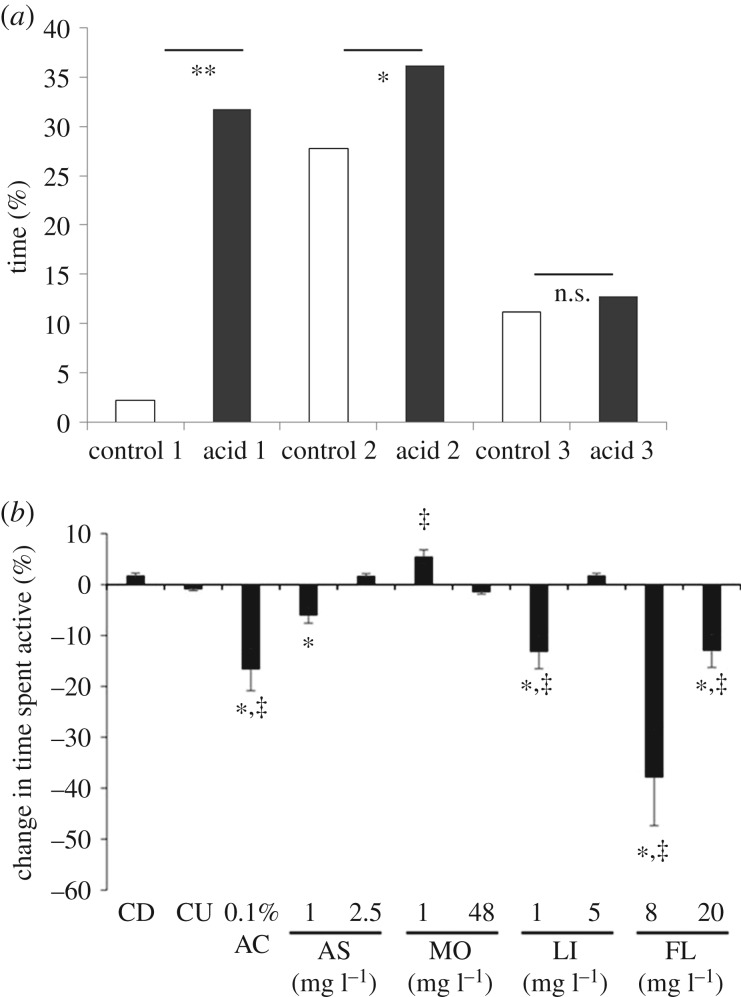Figure 1.
(a) The mean (+s.d.) proportion of time spent within 5 cm of the object for control rainbow trout or those injected subcutaneously with acetic acid in each of the three test groups: 1. Exposure to a novel object; 2. Exposure to a familiar object or 3. Exposure to a novel object with morphine administered as an analgesic. **p < 0.001; *p < 0.05; n.s., not significant. (Reproduced from [26] with kind permission from Elsevier.) (b) Median percentage (±IQR, interquartile range) change from the pre-stimulation (baseline) values in the time spent active shown by 5 dpf zebrafish exposed to 0.1% acetic acid with 30 min prior exposure to different analgesic substances. CD, control disturbed with addition of water; CU, control undisturbed, with no addition of water; AC, acetic acid; AS, aspirin; MO, morphine; LI, lidocaine; FL, flunixin. ‡Significant difference from the undisturbed control group; *significant difference from the disturbed control group (Mann–Whitney U-test with Bonferroni correction applied, p < 0.0026). Samples sizes: CD, n = 437; CU, n = 429; 0.1% AC, n = 416; 1 mg l−1 AS, n = 416; 2.5 mg l−1 AS, n = 438; 1 mg l−1 MO, n = 435; 48 mg l−1 MO, n = 439; 1 mg l−1 LI, n = 402; 5 mg l−1 LI, n = 391; 8 mg l−1 FL, n = 411; and 20 mg l−1 FL, n = 443. (Reproduced from [59] with kind permission from the Company of Biologists).

